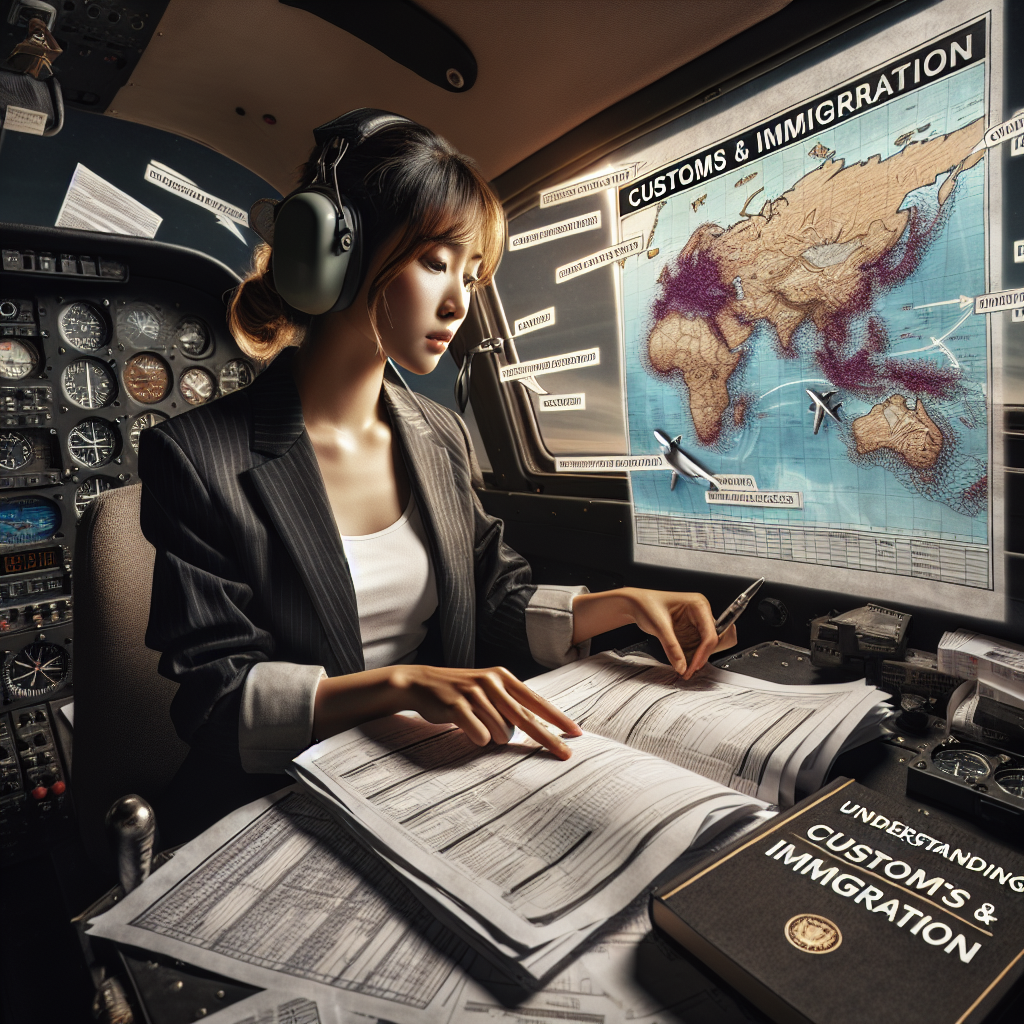Customs and Immigration procedures for private pilots can vary greatly depending on the country you are flying to and from. It is important for private pilots to understand the regulations and requirements in order to ensure a smooth and hassle-free travel experience. In Australia, the Customs and Immigration procedures for private pilots are relatively straightforward, but there are still important guidelines to follow.
When flying internationally, private pilots must ensure that they have all necessary documentation in order before departing. This includes a valid passport, pilot’s license, and any required visas for the destination country. It is also important to check if the destination country has any specific requirements for private pilots, such as additional paperwork or permits.
When departing from Australia, private pilots must also submit an Outward General Declaration (OGD) to the Australian Border Force prior to departure. This form provides important information about the flight, including the departure and arrival airports, the pilot’s details, and any passengers on board. The OGD must be submitted at least 30 minutes before departure, and failure to do so can result in delays or fines.
Upon arriving in Australia, private pilots must clear Customs and Immigration procedures at their port of entry. This involves presenting all necessary documentation to Customs and Immigration officials, including passports, pilot’s licenses, and any required visas. In some cases, private pilots may also be required to declare any goods or items they are bringing into the country, such as firearms or alcohol.
One important consideration for private pilots flying into Australia is the country’s strict biosecurity regulations. Australia has strict rules about bringing in certain items, such as fresh fruits and vegetables, meat and dairy products, and other organic materials. It is important for private pilots to be aware of these regulations and ensure that they do not bring any prohibited items into the country.
Overall, while the Customs and Immigration procedures for private pilots in Australia are relatively straightforward, it is important for pilots to be aware of the regulations and requirements in order to ensure a smooth and hassle-free travel experience. By following the guidelines and being prepared with all necessary documentation, private pilots can navigate Customs and Immigration procedures with ease and enjoy their travels to and from Australia.
Flying across borders as a private pilot can be an exciting and rewarding experience, but it also comes with its own set of challenges, especially when it comes to dealing with customs and immigration procedures. These regulations and requirements can vary greatly depending on the country you are flying to and from, so it is crucial to do your homework and be well-prepared in order to avoid any potential issues or delays.
One of the first things that private pilots need to consider when planning an international flight is the specific customs and immigration requirements of the destination country. Some countries have strict regulations that require all incoming aircraft to land at designated international airports with customs and immigration facilities, while others may allow private pilots to land at smaller airports with no such facilities.
In addition to the requirements of the destination country, private pilots also need to consider the regulations of the country they are departing from. In some cases, pilots may need to obtain a clearance from customs and immigration authorities before departing or after landing, while in other cases, pilots may need to file advance notice of their flight plans or obtain special permits or visas for themselves and their passengers.
It is also important for private pilots to be aware of any specific documentation that may be required for international flights. This can include passports, visas, aircraft registration documents, and insurance certificates. Failure to have the necessary documentation can result in hefty fines, impoundment of the aircraft, or even denial of entry into the country.
To ensure a smooth and hassle-free travel experience, private pilots should also be prepared to answer any questions that customs and immigration officials may have about their flight, passengers, or cargo. Pilots should be able to provide accurate and up-to-date information about their travel plans, including their intended departure and arrival times, routes, and reasons for travel.
Overall, navigating customs and immigration procedures as a private pilot can be complex and time-consuming, but with proper planning and preparation, it is possible to have a successful and stress-free international flight. By understanding the regulations and requirements of the countries you are flying to and from, and by ensuring that you have all necessary documentation and information in order, you can help to ensure a smooth and enjoyable travel experience for yourself and your passengers.

